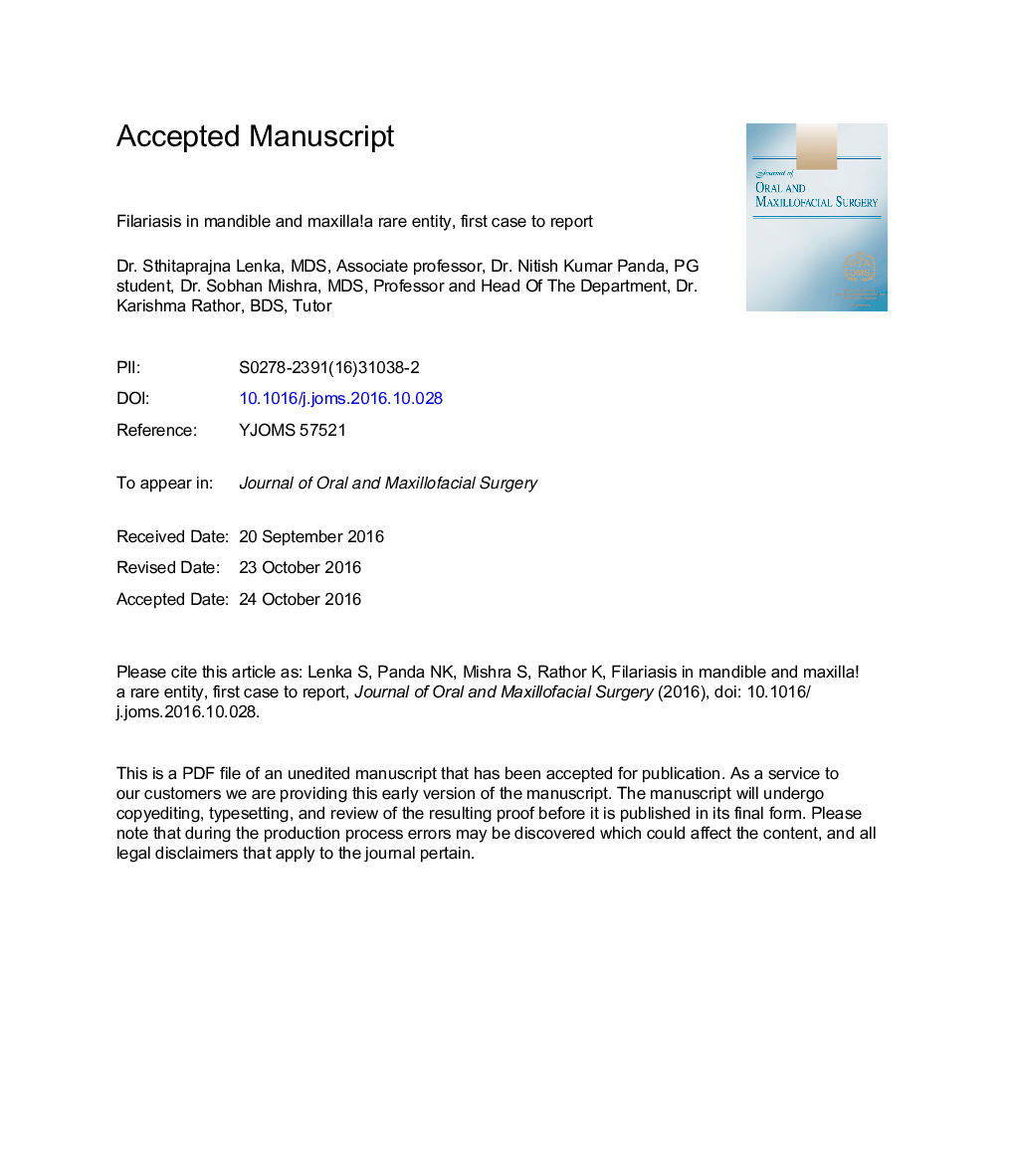| Article ID | Journal | Published Year | Pages | File Type |
|---|---|---|---|---|
| 5641741 | Journal of Oral and Maxillofacial Surgery | 2017 | 16 Pages |
Abstract
Wuchereria bancrofti, Brugia malayi, and Brugia timori, categorized as nematodes, are responsible for causing lymphatic filariasis. Even though it can affect individuals of all age groups and both genders, it predominantly affects people of low socioeconomic strata. The filarial worms dwell in the subcutaneous tissues and lymphatics of human hosts. In India, W bancrofti is the primary nematode to cause filariasis, which is transmitted through the bite of blood-sucking infected female anopheles mosquitoes. Lymphangitis, leading to elephantiasis of the legs, arms, scrotum, and breast, is the most salient clinical feature of lymphatic filariasis. The presence of filarial worms in the oral and perioral soft tissues is uncommon; moreover, the presence of filarial worms in a centrally occurring bony lesion is highly unusual and has not yet been reported. We report a case of a central giant cell granuloma due to filariasis that was diagnosed after biopsy of innocuous radiolucent bony lesions of the maxilla and mandible.
Related Topics
Health Sciences
Medicine and Dentistry
Dentistry, Oral Surgery and Medicine
Authors
Sthitaprajna MDS, Nitish Kumar Panda, Sobhan MDS, Karishma BDS,
